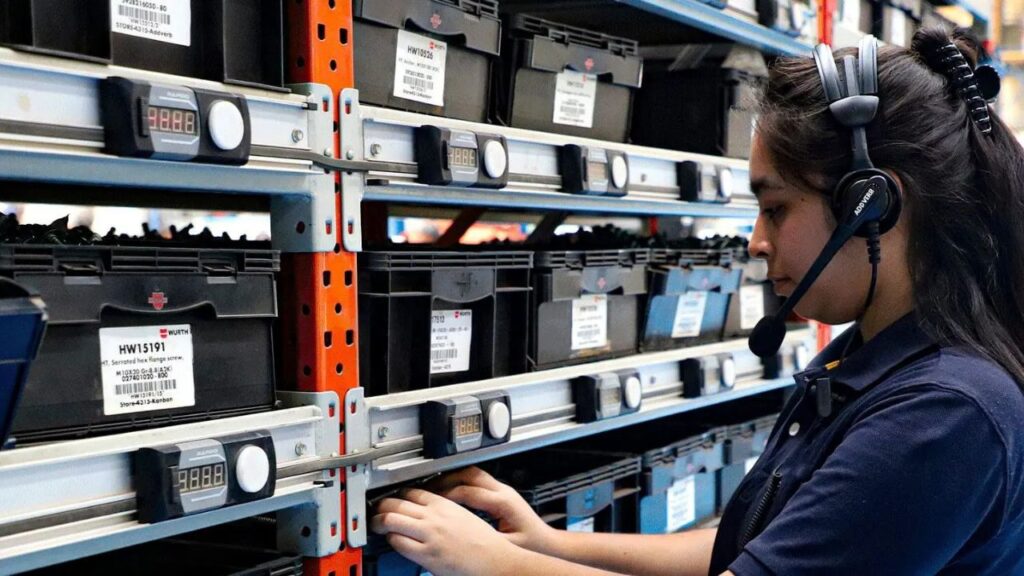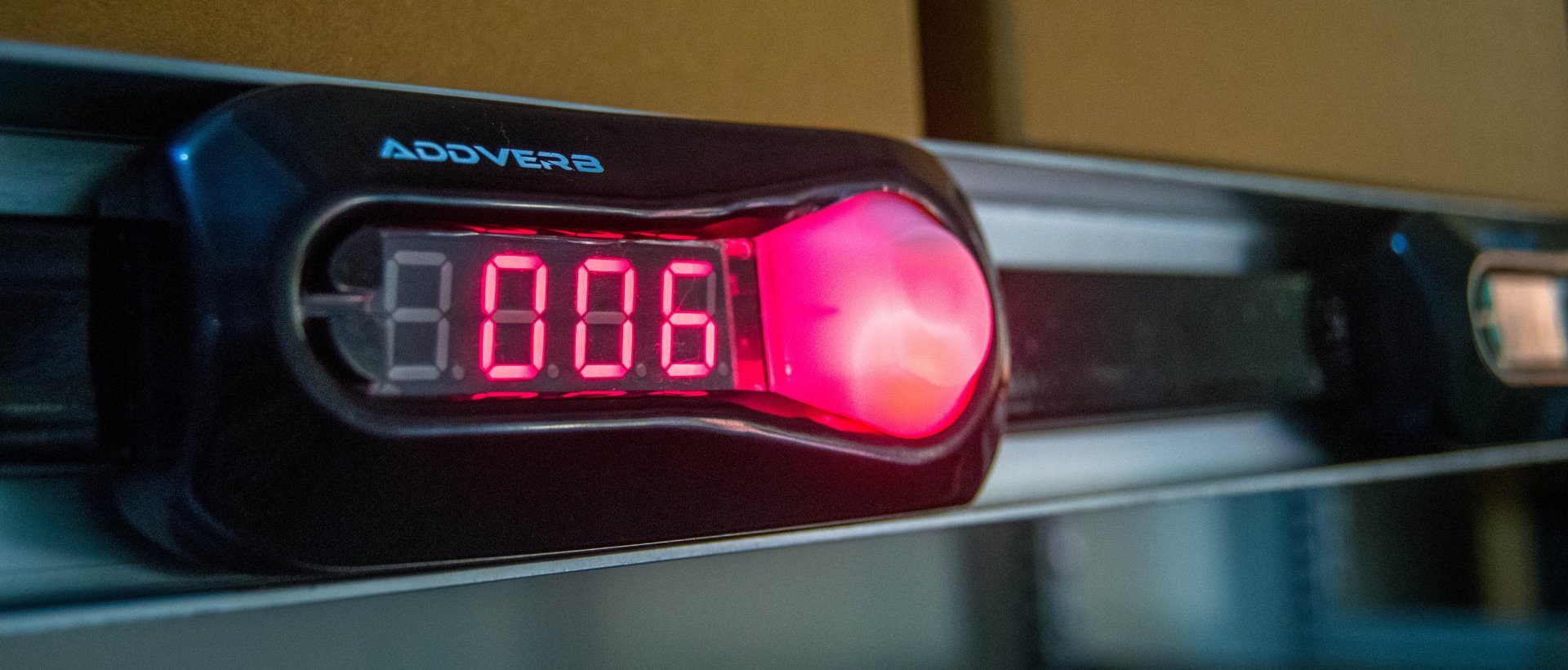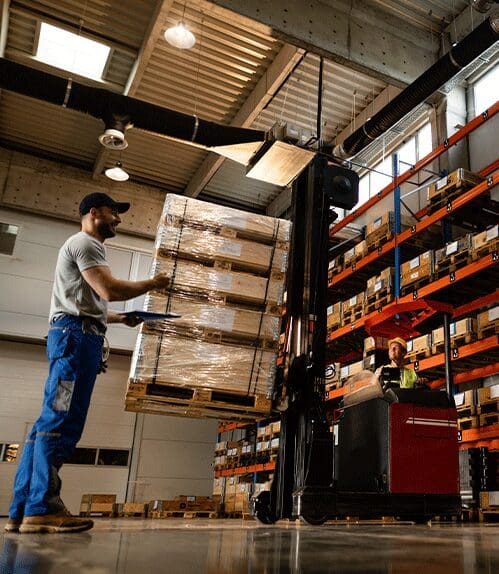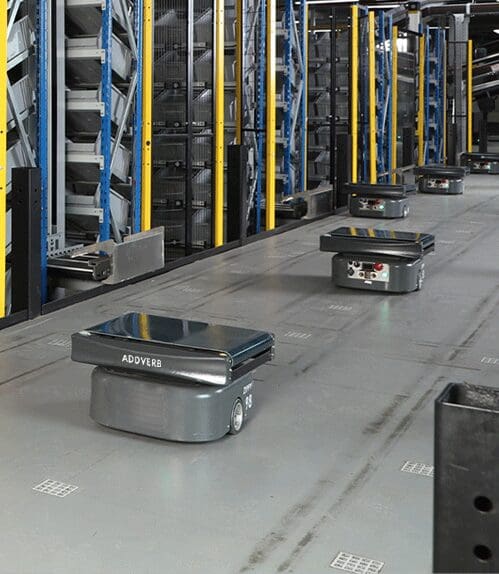Table of Contents
As of 2024, the warehousing industry is projected to account for approximately 32% of the demand for ligt directed picking systems. These systems are used in warehouses as they greatly improve picking accuracy and efficiency.
Light directed picking technology has emerged as the most popular picking methodology and has become an integral part of order fulfilment, especially in e-commerce, retail, FMCG, and auto components industries. In smaller warehouses, this technology helps achieve the necessary throughput and reduces manual errors In larger warehouses, pick-to-light systems are used for a variety of applications from zone picking, cluster picking, batch picking, and others. No matter what the application, the goal is to improve picking speed, accuracy, and useability with a light directed picking system.
How Light Directed Picking Works

Each light directed picking device is assigned a location code corresponding to the bin, shelf, rack, workstation, or position where it is mounted. The software of the pick-to-light device continuously communicates with the warehouse management system (WMS), ERP solution, or any warehouse control system. When a picking operation is initiated, the picker scans the barcode of the crate or tote designated for the ordered items. The pick-to-light device corresponding to the location in which we found the item has its LED display light up indicating the number of items to be picked. The picker picks the items and needs to confirm the pick by hitting the light, which is communicated in real-time to the WMS, WCS, or ERP software.
Bus Bar vs Cable System
Even with its lightweight nature, how key technologies such as proper implementation are used; proper mounting of the software, and effective programming and integration of the same are very important. The first light directed picking systems were deployed using serial cable systems which placed devices in racks and powered them using wired cables. However, the challenges associated with the distribution of serial cables prompted the shift toward busbar trunking systems. As a result, busbar-enabled light directed picking mountings have become common in warehouses today.
Why Addverb
At Addverb, we offer Rapido, our light directed picking solution in both cable-based and bus-bar methods, like many other providers.
Design Friendliness
Busbar-based light directed systems have a compact design, occupying less space. In contrast, cable-based PTL systems require more space due to bending radii and the necessary spacing between parallel cables. Therefore, busbar-based PTLs are more advantageous when multiple implementations are required. Additionally, busbar systems look cleaner and are easier to maintain compared to the cumbersome cable-based systems.
Implementation Ease
Cable-based light directed picking systems require significant resources in terms of effort and cost. Conversely, the modular structure of busbar trunking PTL installations allows for quicker setup, with practically zero installation errors due to the safe, user-guided connection technology.
Flexibility
In a busbar trunking system, PTL units are mounted at tap-off points, creating a variable distribution system for a linear or area-wide power supply. This flexibility eliminates the need for extensive planning and allows for easy retrofitting, playing a critical role in scaling the entire PTL system up or down.
Voltage Fluctuations
Busbars exhibit better resistance to voltage fluctuations compared to cables, particularly when it comes to short circuits, thanks to their robust design. The minimal distance between conductors inside the busbars reduces resistance, leading to less voltage loss compared to traditional cable systems.
Reduced Energy Loss
Busbars have lower resistance than cables, resulting in decreased energy loss during transmission and distribution. They also generate limited reactive power for operation compared to cable systems.
Durability
The compact design of busbars, coupled with a metal casing, allows them to absorb heat generated during electricity transmission and distribution more effectively than traditional cabling systems, which experience greater thermal challenges.
Increased Safety
Busbars are encased in steel, making them less susceptible to damage from human actions, rodents, or environmental changes compared to exposed cables. Additionally, busbar trunking systems utilize standardized products, in contrast to the varied configurations of cable systems.
End Note
Busbar-based light directed picking systems offer numerous advantages over their cable-based counterparts, particularly in terms of functionality and safety. Despite these benefits, cable-based pick-to-light systems still exist and serve specific needs in warehouse operations.

FAQ
What is a light directed picking system?
A light-directed picking system uses lights and displays to guide warehouse workers to the correct picking locations, improving speed and accuracy.
How does a light directed picking system work?
When an order is received, the system lights up the appropriate storage locations. Workers follow these lights to pick items, confirming each pick with a button press or scanner.
What are the benefits of using a light directed picking system?
Benefits include increased picking accuracy, faster order fulfillment, reduced training time for new employees, and decreased operational errors.
In which industries are light-directed picking systems most commonly used?
They are widely used in industries like retail, e-commerce, pharmaceuticals, and automotive, where high picking accuracy and efficiency are crucial.
How does a light-directed picking system enhance warehouse productivity?
By streamlining the picking process and reducing errors, light-directed picking systems significantly improve overall warehouse productivity and efficiency.
Can light-directed picking systems be integrated with existing warehouse management systems (WMS)?
Yes, most light-directed picking systems can be easily integrated with existing WMS to optimize the picking process and ensure seamless operations.





